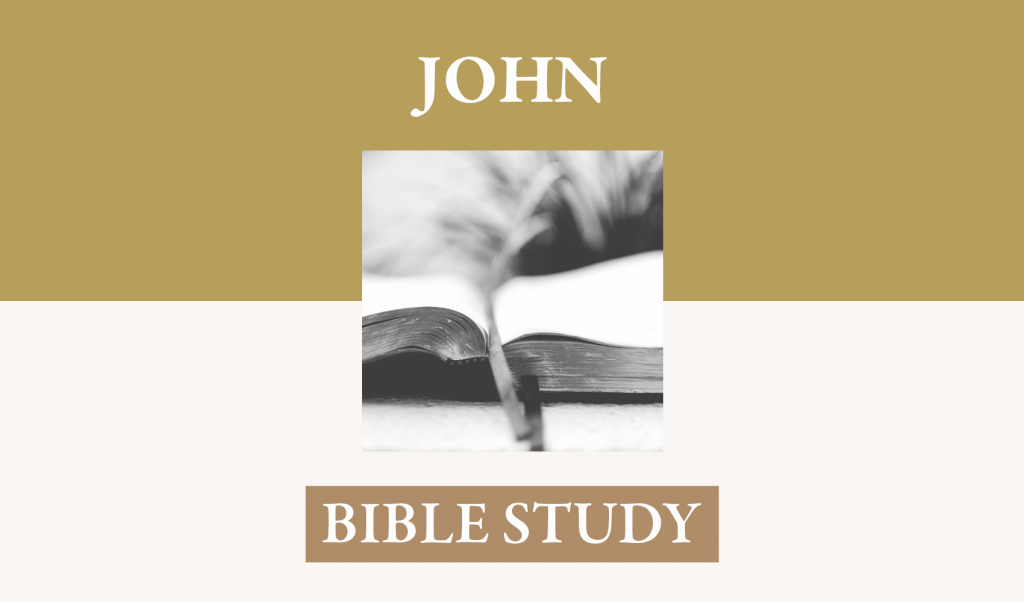The Death of Death
John 11
The Purpose of Lazarus’s Death 1-16
Setting –
Verse 4 & 6 – Jesus’ statement of purpose and intentional delay – Notice the congruency between “the glory of God” and “that the Son of God may be glorified by it.” The glorification of the Son of God in his incarnation and ultimately his redemptive work is the chief means through which God, in the eternal covenant, has determined to show the beauties of his character throughout eternity. This death of Lazarus was a part of that eternal plan. This is the seventh and the most powerful sign that Jesus gives of his messianic status of God and man in one person.
“Jesus loved Martha” etc. – There is the two-fold love that we see in this statement; his eternal love that was set upon them as his elect, but also that love that grows through common human interests, sympathy, soul-kindredship. Jesus was comfortable in their presence and he knew that they understood who he was. Mary was exuberant in her expressions of genuine, humble, gratitude and love for Christ both in his temporal estate and for his eternal glory.
Proposal to go to
Don’t go, it’s too dangerous 8 – The disciples wanted him to avoid any confrontation that might lead to his arrest and death.
Necessity of seizing the opportune time for righteousness 9, 10 – Jesus himself avoided several attempts on the part of his enemies to capture him, so he was not foolhardy. But he also had a clear perception of when his time would come, what he must do until that time came, and he knew each of the steps that must be taken in order to bring to full ripeness the time. The occasion soon would come when it no longer will be said, “His time had not yet come.”
Jesus emphasizes the temporary nature of Lazarus’s death – the metaphor of sleep is used other times in Scripture for death. This is to emphasize that the death of everyone is a mere temporary setting aside of the body until it is rejoined with the rational soul at the resurrection. (1 Thessalonians 4:13-18; 1 Corinthians 15:51-55; Mark 5:39-42). We exist and thrive in our fullest potential when body and soul are together. The resurrection will bring the saints to their potential of praise and of enjoyment of the glory of God, and will assure that the reprobate experience the fullness of just wrath in their whole persons.
Verse 14, 15; Reiteration of Purpose – “So that you may believe”
Hope Inserted into Mourning 17-37
The situation upon arrival – Lazarus dead, mourners present, sisters’ confused grief
A Lesson in Faith for the sisters, Martha and Mary
Disappointment 21, 32 “Lord, if you had been her, my brother would not have died” Both Martha and Mary express the same belief. On this occasion, however, Martha goes on the express a more profound confidence in the power and compassion of Jesus- “even now . . .”
Martha’s affirmation of present faith built on truth 22-24 – She had been taught, opposed to the view of the Sadducees but consistent with that of the Pharisees that there would be a resurrection on the day of judgment. This was not an expression of pessimism about the present, for she already had indicted that she know Jesus could do whatever he willed. She was not sure of what his will was in this situation. His will, however, was to show that even in this extreme case, where corruption already had set in, he had final authority.
Jesus expands Martha’s understanding 25-27 cf. 39, 40
Jesus affirms that resurrection to life is a matter bound up entirely with his person and work. 25, 26 [8:51; 6:39, 40; 5:21, 24-29]
The correctness and earnestness of Martha’s confession
the Christ – the one anointed of God to carry out the redemption of his people
Son of God – Of necessity the one to whom all the redeemed would be indebted throughout eternity must be God; and, though he must be man to be a mediator, he must be God to give sufficient excellence to the sacrifice to make real atonement for the people and to put an end to al other sacrifices.
Pre-existent and coming into the world with a purpose
Mary’s worshipful assertion 28-32 – What significance, if any, is there in the different postures taken consistently by Mary and Martha? Martha came to him and apparently stood; Mary fell at his feet. Martha, on the other hand, went further in her affirmation of faith in Jesus’ power and gave a clear statement of the infinite dignity of his person.
Jesus troubled in Spirit 33-37
Was this the result of sympathetic compassion for the sorrow of his friends? That the passage begins with a statement of the love that Jesus had for this family could certainly included his sympathetic human heart and a mourning with them over the loss of their brother. This in no sense diminishes Jesus’ omnipotence or perfect knowledge of what was about to transpire but clearly points to the true humanity of this person and his sympathetic love for them.
Did he contemplate the grave, death and its origin in sin and have a fresh and intense realization of what he must suffer in order to be the resurrection and the life? Cf. 12:27 and 13:21 [same word for troubled and relates to the intense realization of something concerning his own death; cf. Heb 5:7-9] The entire scheme of sin bringing forth death, the implications of the infinite guilt of sin, and the future enduring of divine wrath and removal of all the Father’s mercy, grace, support, and favor from him all flooding into his soul at this time provided one of those points in which “although he was a Son, he learned obedience through the things that he suffered.
Spurgeon points out in a sermon on John 11 that the question of verse 37 to the eyes of faith should have been a positive affirmation: “He has opened the eyes of the blind, and he also can raise the dead.”
The Raising of Lazarus 38-44
Manifesting the Glory of God 40
the reality and certain finality of L’s death; corruption already set in
Certainty that Jesus has of the Father’s hearing him 41 [9:31]
Another evidence that he is sent of God, but which provoked the Jewish leaders, not to belief, but to seek to kill him [see John 15:18-25;16:5, 27-28]
Calling Lazarus
He walked out still in his grave clothes and had to be loosed by those outside the tomb. In Mark 5, at the raising of the little girl, he instructed those caring for her to give her something to eat.
These hints of life as normal, the need for help, and the existence of normal limitations on those that have been raised, show that this and other raisings did not involve all the glory of the resurrection, having glorified bodies, etc. but that these were resuscitations.
The Radical Response of Unbelief 45-57
some Believe [1 Cor. 1:24]
Others report this to Jewish leaders [in accordance with the Jewish policy toward Jesus]
Jews strategize 47b-53, 57 – They became seriously committed to stopping Jesus. They did not want his ability to create excitement to give the impression of revolution and bring
Verse 52 – An unintended prophecy – How does it fit the argument of John’s Gospel? Who are the children of God scattered abroad? These are the sheep referred to in John 10, even those “that are not of this fold” that Jesus will bring also. The gospel of John makes it extremely difficult to deny that Jesus had in mind the salvation of a definite number of persons given him by the Father and scattered among al nations and throughout all ages.
Jesus no longer walks among them, but takes his disciples aside to instruct them waiting till the time to return to the most recent place of a miraculous sign then to culminate his ministry by manifesting his glory—in the humble triumphal entry, in his submission to suffering and death, and in the final manifestation that death no longer has a sting. Soon his time would come, and the cup the Father had given him to drink, he would drink.
Points for Contemplation
Faith – Faith must have both content and opportunity for commitment – Faith sees the glory of God in the person and work of Christ; Jesus causes our faith to grow by creating a radical option in which we will choose either the world or Christ.
Unbelief – the more intense the evidence for belief, the more radical the hatred of unbelief






















